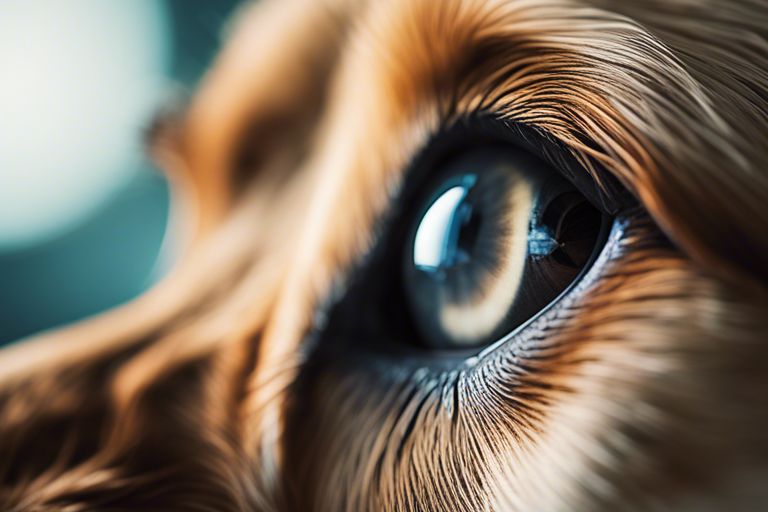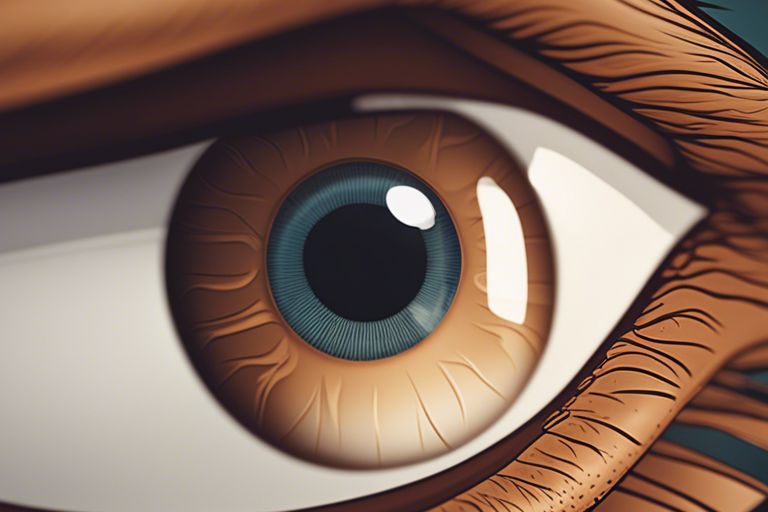Just like humans, dogs have complex eye structures that play a vital role in their overall health. Understanding your dog’s third eyelid can help you monitor their eye health and detect any potential issues early on. In this blog post, we will probe into the basics of doggy eyelids, explore the purpose of the third eyelid, and provide tips on how to keep your furry friend’s eyes healthy and happy. Let’s ensure your canine companion’s vision stays crystal clear!
Key Takeaways:
- The third eyelid, or nictitating membrane, in dogs serves as an extra layer of protection for their eyes.
- Changes in the appearance or behavior of the third eyelid can indicate potential health issues in your dog.
- Regular check-ups with a veterinarian can help ensure the overall eye health of your dog, including monitoring the function of the third eyelid.
The Anatomy of Doggy Eyelids
The Upper and Lower Eyelids
There’s a sophisticated design when it comes to the structure of your dog’s eyelids, which play a crucial role in protecting their eyes. Doggy upper and lower eyelids are equipped with lashes that help shield the eyes from debris and excessive light. Additionally, these lids contain meibomian glands that secrete oils to keep the eyes lubricated and prevent dryness.
The Third Eyelid: Nictitating Membrane
There’s a unique feature that sets dogs apart from humans when it comes to eyelids – the third eyelid, also known as the nictitating membrane. This semitransparent membrane is located in the inner corner of the eye and can move across the eyeball for extra protection. Doggy nictitating membranes are a natural defense mechanism that helps keep their eyes moist and free of irritants.
Eyelids also serve as a barrier against pathogens, allergens, and other foreign substances that could potentially harm your dog’s eyes. The third eyelid, in particular, is a valuable asset in maintaining eye health and ensuring that your furry friend’s vision remains clear and comfortable.
Functions of the Third Eyelid
Protection from Debris and Injury
Some may wonder about the purpose of a dog’s third eyelid. One key function is to protect the eye from debris and potential injury. This extra layer of protection helps shield the eye from dirt, dust, and other foreign objects that could cause irritation or harm.
Lubrication and Tear Production
Lubrication and tear production are imperative functions of the third eyelid. This thin membrane helps distribute moisture across the eye’s surface, keeping it lubricated and ensuring proper tear production. The third eyelid plays a crucial role in maintaining the overall health and well-being of your dog’s eyes.
Tears produced by the third eyelid are imperative for keeping the eye moist, removing debris, and fighting off potential infections. This natural lubrication helps prevent dryness and discomfort, contributing to your dog’s overall eye health.

Common Eye Conditions Affecting the Third Eyelid
Cherry Eye
To understand Cherry Eye, we must recognize that it occurs when the gland of the third eyelid becomes swollen and protrudes, resembling a red cherry. This condition is more common in certain breeds like Bulldogs, Beagles, and Cocker Spaniels. While it may not always cause discomfort, it can lead to dry eye and irritation if left untreated.
Prolapse of the Third Eyelid
For a dog suffering from Prolapse of the Third Eyelid, the third eyelid slips out of its normal position and becomes visible. This condition can be caused by trauma, eye infections, or underlying health issues. Immediate veterinary attention is crucial to address the prolapse and prevent further complications.
Prolapse of the Third Eyelid can be a painful and distressing experience for your dog. Symptoms may include redness, swelling, and excessive tearing. It is important to seek veterinary care promptly to alleviate discomfort and prevent any lasting damage to the eye.
Third Eyelid Flap (Tarsorrhaphy) for Eye Trauma
Tarsorrhaphy, also known as a Third Eyelid Flap, is a surgical procedure used to protect and support the eye in cases of severe trauma. By partially sewing the third eyelid across the eye’s surface, this technique helps with healing and reduces the risk of further damage or infection. Your veterinarian can advise if this procedure is suitable for your dog’s specific condition.
Third Eyelid Flap (Tarsorrhaphy) for Eye Trauma is a specialized surgical intervention that requires precision and expertise. It is important to follow post-operative care instructions diligently to ensure your dog’s eye recovers effectively and maintains optimal health and function.
Care and Maintenance of Your Dog’s Eye Health
Regular Check-ups and What to Look For
Not paying attention to your dog’s eye health can lead to serious complications. An annual visit to the veterinarian for a thorough eye exam is vital in detecting any issues early on. Keep an eye out for redness, discharge, cloudiness, or any changes in your dog’s vision, as these could be signs of a problem that needs prompt attention.
Best Practices for Eye Care at Home
Care at home is crucial for maintaining your dog’s eye health. Regularly examine your dog’s eyes for any abnormalities such as redness, swelling, or discharge. Use a damp cloth to gently wipe away any debris or crust that may have accumulated around the eyes. Avoid using harsh chemicals or soaps near your dog’s eyes, as they can cause irritation.
By incorporating these practices into your routine, you can help ensure that your dog’s eyes stay healthy and free from any issues that could potentially impact their overall well-being.
Summing up
On the whole, understanding your dog’s third eyelid is important for maintaining their eye health. By learning about its functions and potential problems, you can better care for your furry friend and seek medical attention when needed. Remember to monitor your dog’s eyes regularly and consult with your veterinarian if you notice any unusual signs or symptoms. A healthy third eyelid contributes to your dog’s overall well-being and happiness, so stay informed and proactive in protecting this vital part of their anatomy.
FAQ
Q: What is a dog’s third eyelid?
A: A dog’s third eyelid, also known as the nictitating membrane or haw, is a translucent or white membrane that helps protect and lubricate the eye. It moves from the inner corner of the eye across the cornea, providing an extra layer of defense.
Q: What are common issues associated with a dog’s third eyelid?
A: Common issues involving a dog’s third eyelid include cherry eye, a condition where the third eyelid prolapses and becomes visible, and haws syndrome, which occurs when the membrane is inflamed or irritated. Additionally, tears or injuries to the third eyelid can impact your dog’s eye health.
Q: How can I ensure my dog’s eye health and monitor their third eyelid?
A: To maintain your dog’s eye health, regularly check their eyes for any abnormalities or signs of irritation. Monitor the appearance of the third eyelid and seek veterinary attention if you notice changes. Keep your dog’s eyes clean and consult a veterinarian for proper care and treatment if needed.

